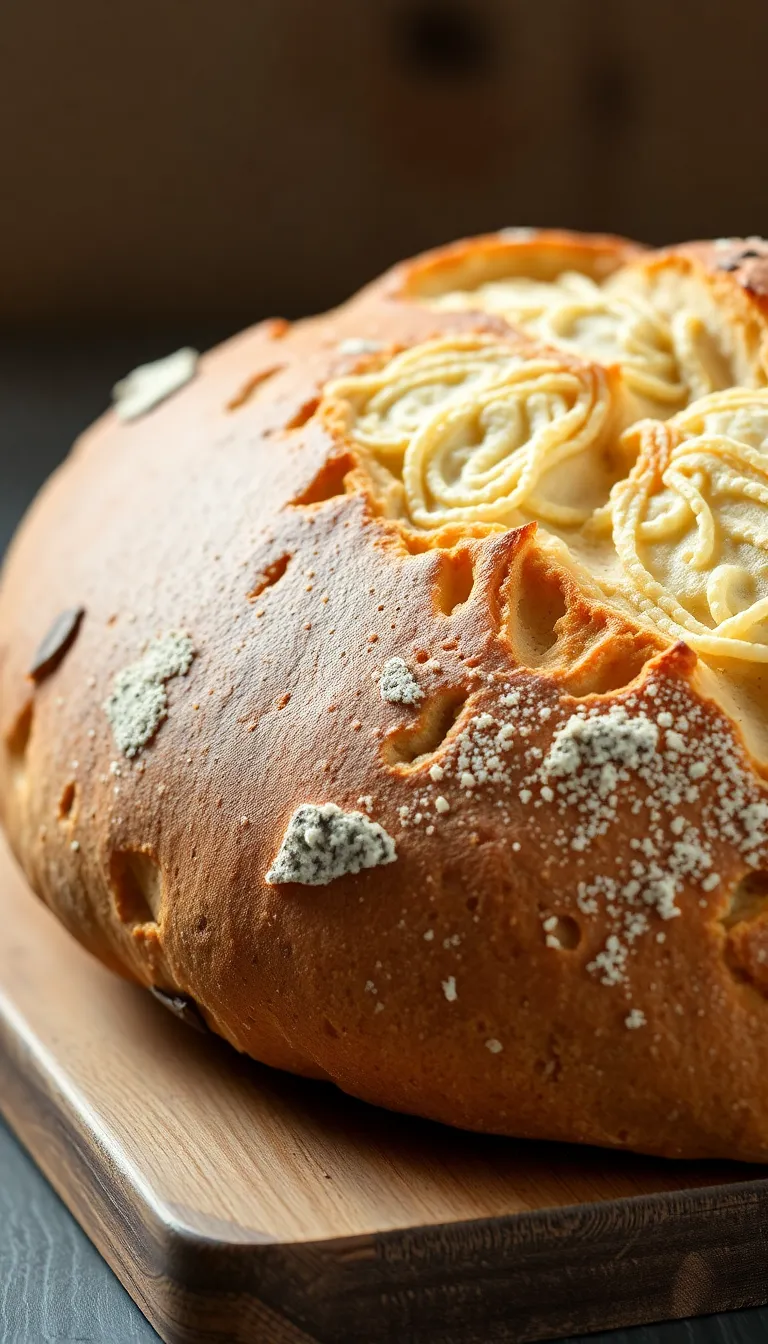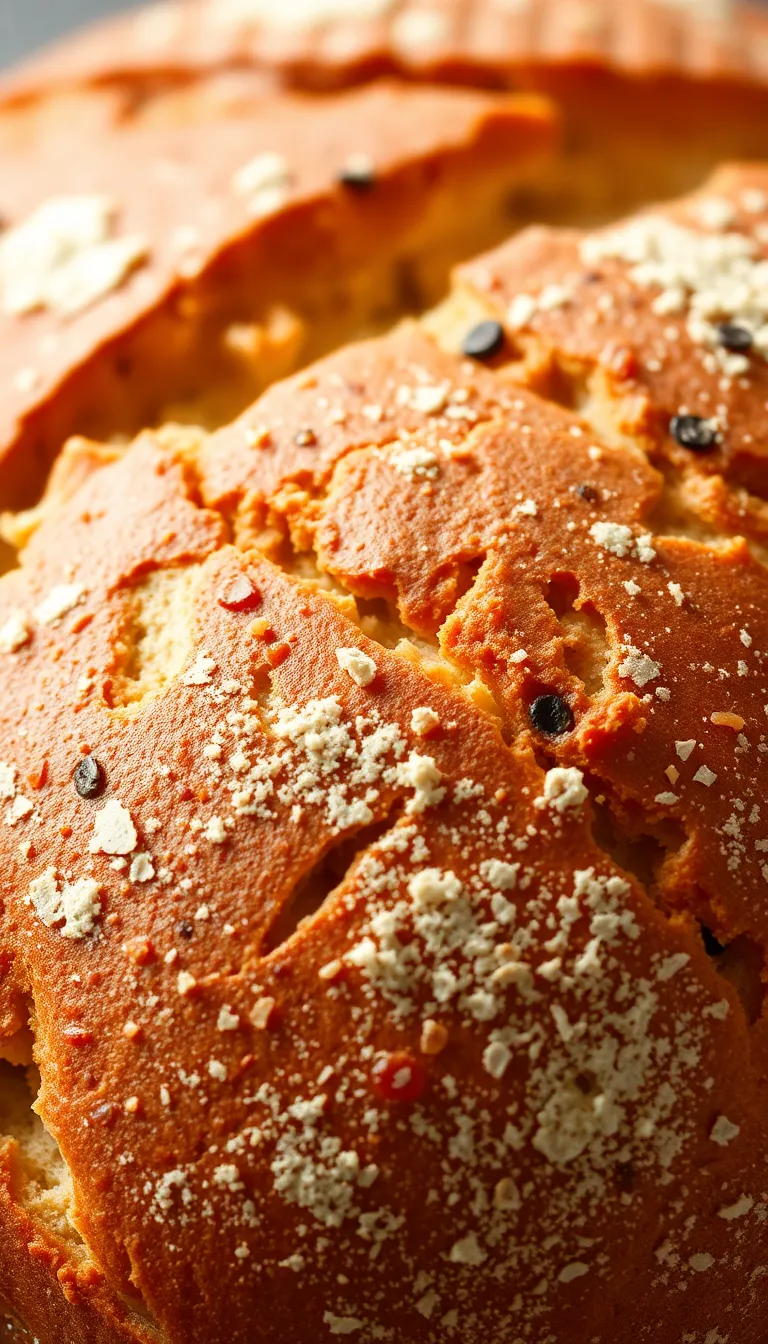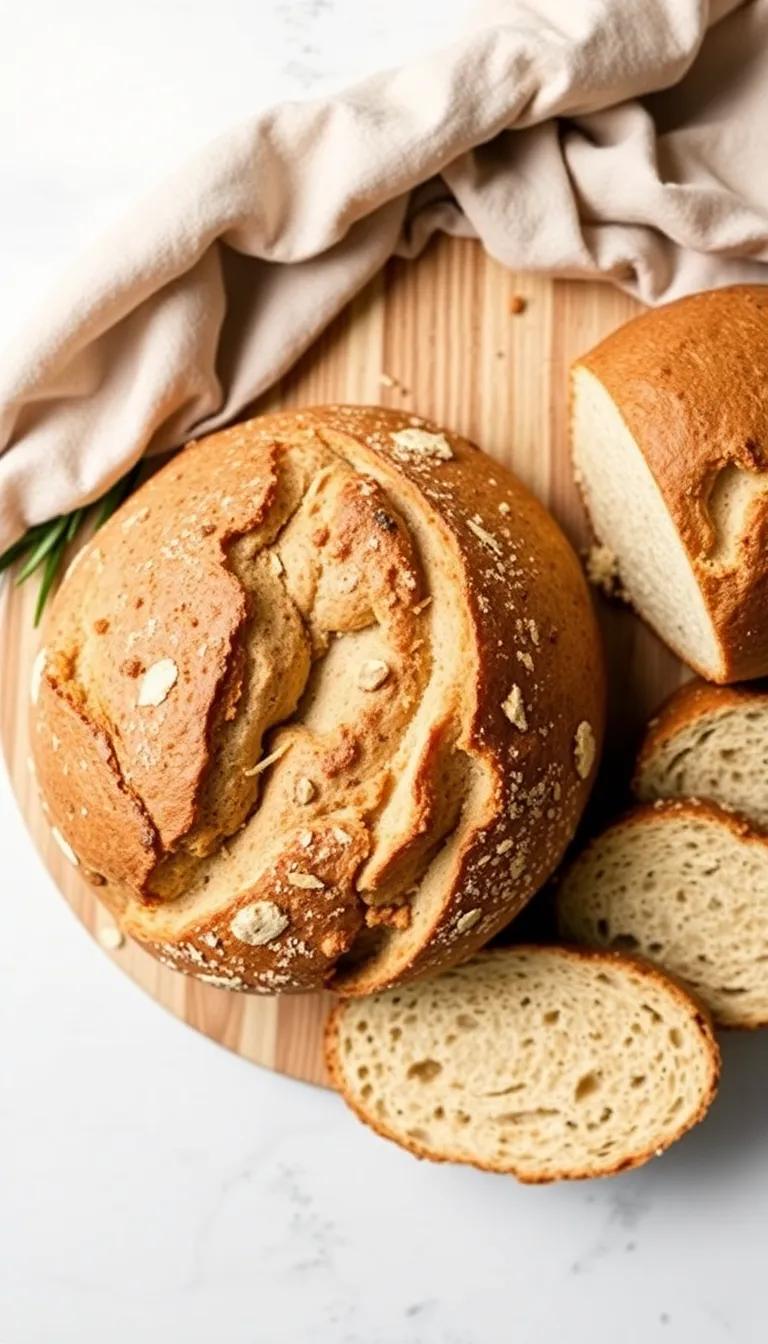Sourdough isn’t just bread—it’s a flex. While everyone else buys sad, gummy loaves from the store, you’re out here making art with flour, water, and patience. No fancy machines, no obscure ingredients, just you and a bubbling jar of starter.
And guess what? It’s easier than you think. This recipe cuts the nonsense and delivers a crusty, tangy masterpiece every time.
Ready to stop failing and start baking?
Why This Recipe Works (Spoiler: Science and Laziness)

This recipe balances effort and reward like a tightrope walker with a death wish. The secret? Long fermentation. Letting the dough develop slowly means deeper flavor, better texture, and less work for you.
No kneading marathons, no frantic temperature checks—just mix, wait, and bake. The result? A loaf that’ll make your local bakery cry.
Ingredients (Yes, It’s Only 4 Things)
- 500g bread flour (all-purpose works in a pinch, but don’t @ me)
- 350g water (filtered if your tap water tastes like a swimming pool)
- 100g active sourdough starter (if yours isn’t bubbly, try again tomorrow)
- 10g salt (not the fancy Himalayan stuff—save that for Instagram)
Step-by-Step: How to Make Sourdough Without Losing Your Mind

- Mix it up: Combine flour, water, and starter in a bowl.
Stir until it looks like a shaggy mess. Cover and walk away for 30 minutes.
- Add salt: Sprinkle salt over the dough, then fold it in like you’re tucking in a rebellious toddler. Cover again.
- Stretch and fold: Every 30 minutes for 2 hours, grab one side of the dough, stretch it up, and fold it over.
Repeat 3-4 times per session. Yes, it’s weirdly satisfying.
- Bulk ferment: Let the dough sit at room temperature for 4-6 hours until it’s puffy and bubbly. If it’s cold, cheat with a slightly warm oven (off, obviously).
- Shape it: Dump the dough onto a floured surface, shape it into a round or oval, and plop it into a floured proofing basket.
Or a bowl. We’re not judging.
- Final proof: Let it rise in the fridge overnight (12-16 hours). This is where the magic happens.
- Bake: Preheat a Dutch oven at 450°F (230°C) for 30 minutes.
Score the dough, drop it in, and bake covered for 20 minutes. Uncover and bake another 20-25 minutes until it’s darker than your coffee.
Storage: Keep It Fresh or Freeze It Like a Sourdough Vampire
Store your loaf cut-side down on a cutting board for up to 3 days. Want it to last longer?
Slice and freeze it. Toast straight from the freezer—no one will know you baked it last week.
Why This Recipe Is a Game-Changer

Besides making you look like a culinary wizard, this recipe is naturally fermented, meaning easier digestion and no weird preservatives. It’s cheaper than store-bought artisanal loaves, and you control the flavor.
Too tangy? Shorten the ferment. Want more depth?
Let it go longer. You’re the boss now.
Common Mistakes (And How to Avoid Them)
- Over-flouring the surface: Your dough will turn into a dry, sad pancake. Use just enough to prevent sticking.
- Rushing fermentation: Sourdough runs on its own schedule.
Patience is non-negotiable.
- Not scoring deep enough: Shallow cuts = weird explosions. Slash like you mean it.
Alternatives for the Rebellious Baker

Out of bread flour? Whole wheat or rye flour adds nutty depth (replace up to 50%). No Dutch oven?
Use a baking stone and a tray of water for steam. Starter MIA? Borrow some from a friend or make a quick yeast version (but expect side-eye from sourdough purists).
FAQ
Can I use tap water?
If your water tastes fine, go for it.
Chlorinated water can weaken your starter, though. Filtered or bottled is safer.
Why is my dough sticky?
It’s supposed to be. High hydration = better crumb.
Flour your hands, not the dough.
How do I know when it’s done baking?
Tap the bottom. If it sounds hollow, you’re golden. If not, bake longer (unless you enjoy gummy bread).
Can I skip the fridge proof?
Yes, but the flavor and texture won’t be as good.
Room-temperature proofing cuts time to 2-4 hours.
My starter isn’t bubbling. Help?
Feed it equal parts flour and water, wait 12 hours, and try again. If it’s still dead, you might need a new one.
RIP.
Final Thoughts
Sourdough isn’t rocket science—it’s better. It’s alive, unpredictable, and deeply rewarding. Follow this recipe, embrace the chaos, and soon you’ll be the person smugly explaining “hydration percentages” at parties.
Welcome to the cult.